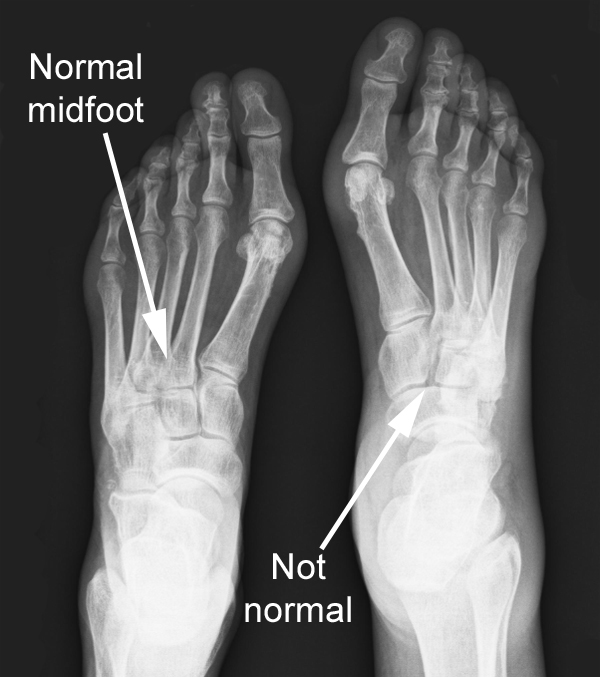This type of fracture involves the midfoot, which is the center of the arch.
Recall normal bony anatomy:
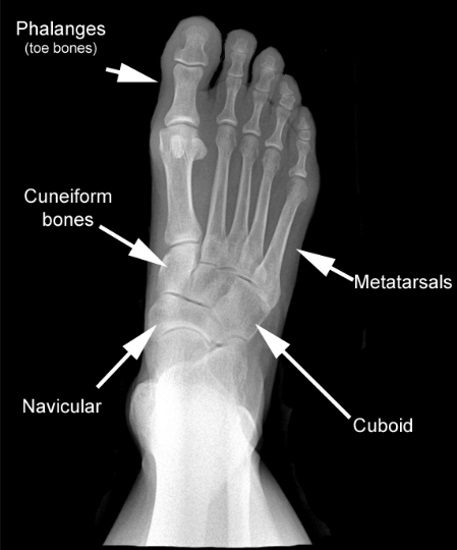
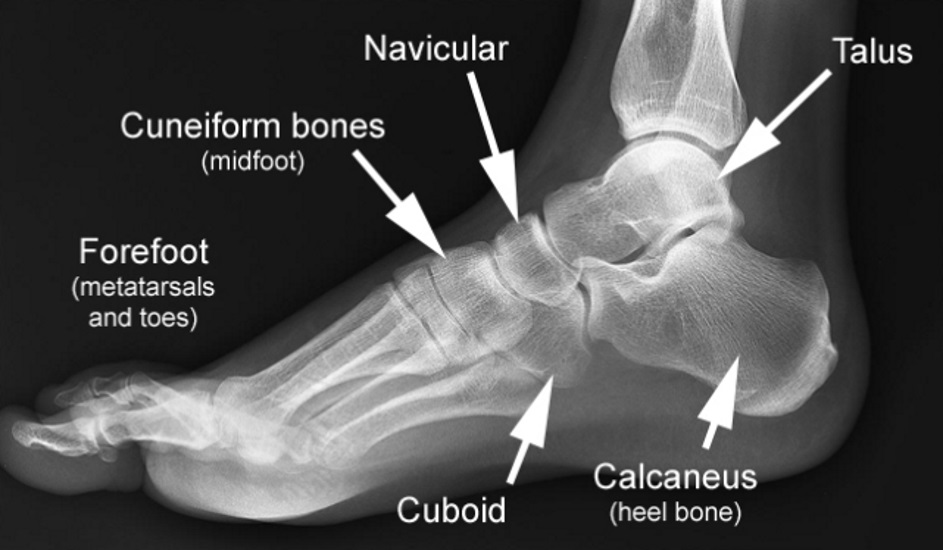
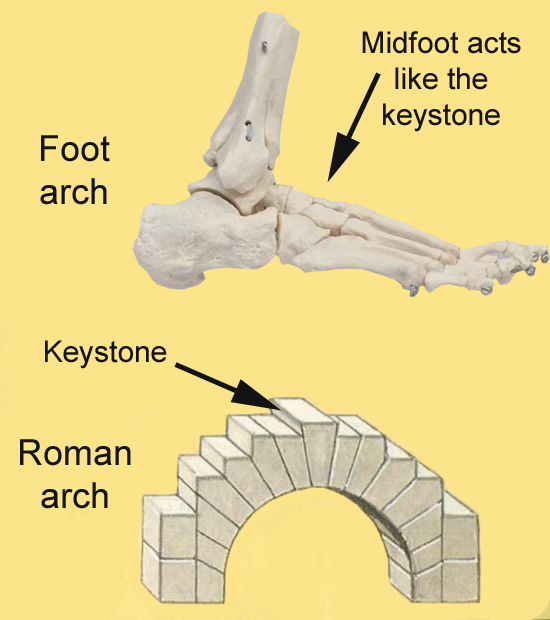
Just like the keystone is the center of a Roman arch, and without it the arch will not be structurally stable (will fall down), similarly, if the midfoot is disrupted, the arch of the foot will not be stable.
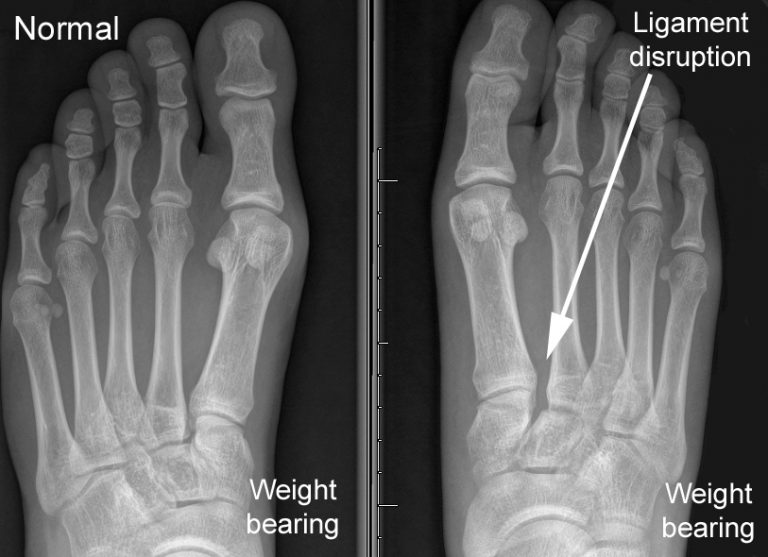
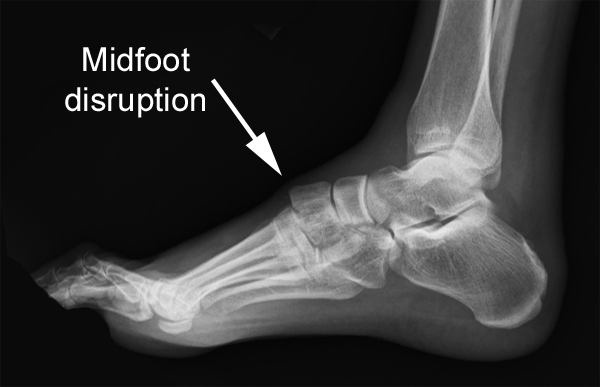
And sometimes, the X-ray changes are more obvious, as seen here where one midfoot bone is clearly out of place.
In this view top down of the feet, the normal midfoot bony alignment on the uninjured foot is not reflected in the injured foot, with the partial dislocations of the midfoot bones showing abnormal overlapping alignment.
In the vast majority of these cases, surgical treatment is needed to stabilize this key component of the arch of the foot.
In most cases, the patient will need to avoid bearing weight for at least six weeks, and even with surgical treatment, there is still a significant chance of residual midfoot arthritis.
